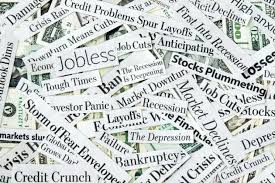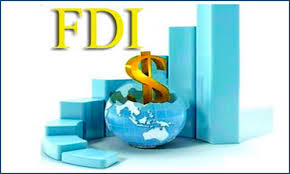U.S. Financial crisis is an important event in the history of world economy. Most of the people believe that the crisis was started in the 2007 or 2008. But the crises were started much before that. It was not a single event but a series of crises. Let’s recall it and start a journey of ‘rethinking economics’. Here, a description of the major causes that led to the crisis:
Change in the traditional banking system: There was a transformation in the traditional banking. Repeal (an official cancellation) was passed in 1999 which removed the distinction between the depository banks and investment banks. There was a sudden rise in the investment in the share market. In 1990, 25% of households shifted to stocks which increased to 55% in 2001. By 2001, the entire economy of U.S rested on stock market. Imagine a fall in the growth of stock market! The whole economy would crash.
Changes in monetary policies: The central bank in order to stimulate the investment in the U.S. economy planned major rate cuts. In 1980, the federal funds rate was 23% which was brought down to 8% in 1990 and 1% in 2001. Due to the lower rate household had an incentive in obtaining loans. With these loans they invested in the housing market. Due to a sudden increase in the demand the price in the housing sector rose sharply. After reaching to its maximum the housing bubble burst resulting in expensive consequences.
Also banks had an incentive in increasing their profits by giving away more credit. They started making subprime credits or substandard credit which faulted later and led to the crises.
Securitization: It is the process of converting assets into financial securities. Banks were getting off from the risky loans by repackaging it into financial securities. In order to reduce risk, in a way, they were obtaining more risk. They had incentive in attracting people and getting rid off their sub-prime loans.
Excessive leveraging: Leveraging is a model which describes that a company can get higher profits if they finance their capital more by borrowing than share capital. The ideal ratio is 2:1. The inventors of this model received a Nobel Prize for this model. Due to its huge popularity companies increased their borrowings. Some examples are- Lehman brothers- 16:1; Fannie Mae- 20:1; Freddie Mac- 60:1; LTCM – 250:1. When they were unable to repay the loans many companies became bankrupt.
There were many other causes which added to the main causes and increased the possibility of the crises. Countries should learn from it and avoid any future crises. Recently RBI governor Raghuram Rajan indicated the possibility of the world moving to another crisis. Economies should be alerted and take the necessary steps in combating with any of the financial crisis in the near future.





25 Comments. Leave new
Good work
Thanks!
Informative article!
🙂
Informative.. Good job..
Thanks
Informative
Very good article..
thanks
Nice..!
Good work..!
thank you!
Financial crisis and depressions are bound to happen again because of the continuous business cycle.
nicely written and explained.
thanks
Great!!!
🙂
Well explained
thanks
well written and highly informative!
thanks!
Informative 😀
Very good, Megha!
informative !
Nice